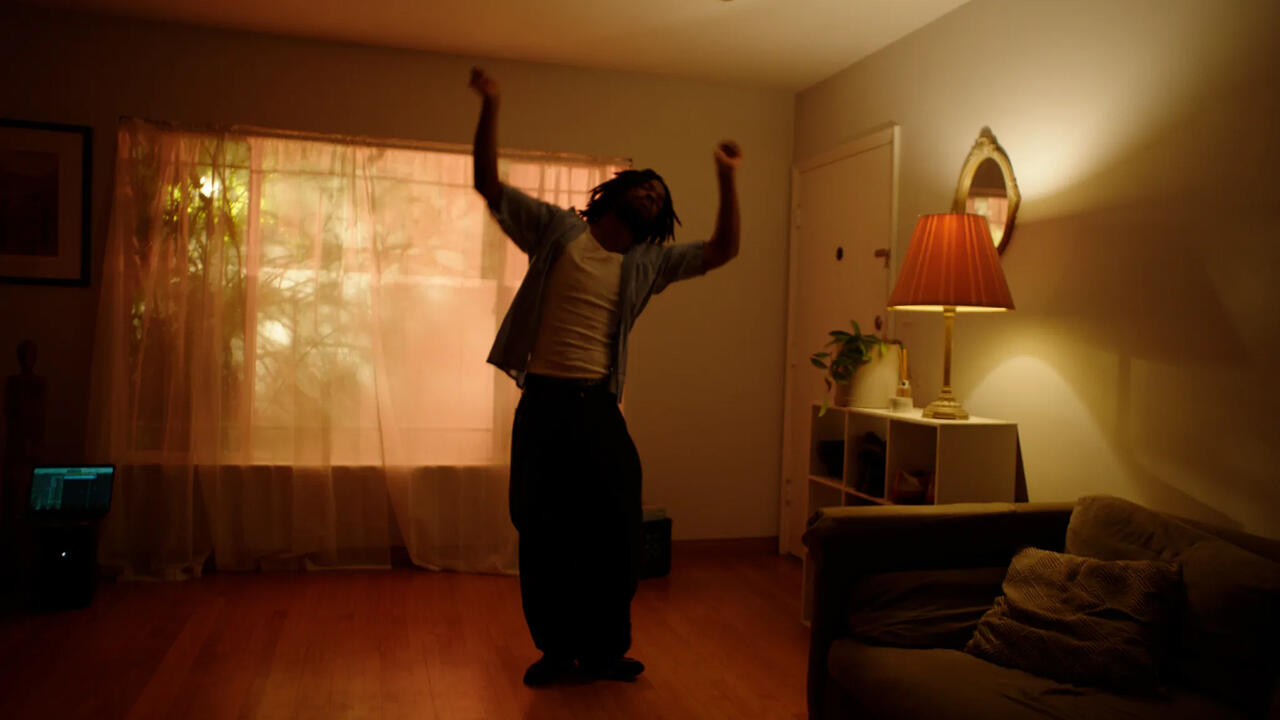‘We Are Strangely Used to Asking Artists to Turn Down Their Sound’
Some thoughts on ‘Strange Days’, ahead of Frieze Music with Bang & Olufsen’s celebration of the UK premiere of Kahlil Joseph’s Fly Paper
Some thoughts on ‘Strange Days’, ahead of Frieze Music with Bang & Olufsen’s celebration of the UK premiere of Kahlil Joseph’s Fly Paper

‘Strange Days’. The title of the exhibition at 180 Strand - a collaboration between New York’s New Museum and The Store x Vinyl Factory - could refer to Kathryn Bigelow’s pioneering, critically-baffling 1995 Sci-Fi thriller which shares the same name: or the 1967 album by the doors, which does as well.
A sense of the capacious resonances between moving image, popular music and contemporary art is constantly playing in the background, as it were, of this exhibition, made up of video works shown at the New Museum over the last 10 years, which New Museum Director Massimiliano Gioni modestly describes as: ‘a small and partial history of the video art over the last 10 years’. Featuring the work of 21 international artists, ‘Strange Days: Memories of the Future’ spans emerging practices - like the scabrous animated psycho-comedy of Wong Ping – to icons of the last decade, such as Camille Henrot’s Grosse Fatigue (2013) - for which the artist won a Silver Lion at the 2013 Biennale (the acclaimed edition of which Gioni was Director). Grosse Fatigue - a witty, visually retelling of creation myths through objects – is sound-tracked by a commissioned rap track. In the next room, Ed Atkins’s work crescendos with a blast of ‘Always on My Mind’ by Elvis. Between these two rooms the sound from one film bleeds ever so slightly into the space of the adjacent room, leading the visitor on through the sometimes (consciously) labyrinthine installation. While a previous, acclaimed show of video work at 180 Strand, 2016’s ‘The Infinite Mix’, presented each multimedia work within its own ‘closed capsule’, Gioni says he wanted ‘Strange Days’ to ‘feel more narrative’. ‘The music is like a thread’, he continues, ‘so you keep progressing in the spaces’.

The interrelation between music, video art and sound intensifies in the room where Kahlil Joseph’s Fly Paper (2017) is screened - the first time it is being shown in the UK. Joseph’s earlier video work, m.A.A.d. (2014), a standout of ‘The Infinite Mix’, was originally commissioned by Kendrick Lamar to screen during the rapper’s appearances on Kanye West’s ‘Yeezus Tour’; employing ‘the temporal-spatial collage of rap, mixing documentary footage of everyday life in Compton’s black community with home video shot by Lamar’s uncle’, as Jonathan P. Watts wrote in frieze magazine. For Fly Paper, Joseph turns his attention to another foundational black cultural quarter, Harlem, interweaving his family life (in particular, a period caring for his ill father) and the life of jazz photographer Roy De Carava.
Possibly the most ambitious soundscape the artist has realized – levels were still being adjusted on the day of the show’s opening – experiencing the work is as much a question of hearing the alto of a jazz saxophone and feeling the subwoofers vibrate. It’s uncompromising, but it was essential for Gioni. ‘We are strangely used to thinking you can just ask an artist to turn down their sound. But you would never ask an artist to change the picture, or the light level of the film.’

Fly Paper’s rhapsodic mingling of exquisitely choreographed dance scenes (shot in a loft adjacent to the New Museum), crepuscular views of Harlem nightlife, found footage and home video is indicative of ‘Strange Days’ overall, Gioni says: ‘this quality of different formats and technologies that are combined is reflected throughout the exhibition’. The role of home video and found footage, in particular, Gioni notes, cuts to the heart of one of the stories he is trying to tell in the show: home videos being, like pop music perhaps, deeply personal and intimate, and at the same time providing an immediate emotional connection (who today doesn’t remember their past at least partly through recordings of it?) What is particularly fascinating for Gioni is that this dynamic place is located within a technological medium, contrary to technology being frequently associated with a kind of cold, mass anonymity. ‘You could say that “We all dream in Technicolour” – or, in Kahlil’s case, black and white’, Gioni reflects. ‘In the same way, we all remember in video’. In this way, Gioni seems to suggest, the works taken together constitute a kind of translation of collective memory. ‘In a sense’, he concludes, ‘they are all dreams’.
To celebrate the UK premiere of Fly Paper by Kahlil Joseph in ‘Strange Days: Memories of the Future’, Frieze London, The Store X and Vinyl Factory present Frieze Music with Bang & Olufsen, on Saturday 9th, featuring sets and performances by Sampha, Anais, Grace Wales Bonner and James William Blades.
A limited number of tickets will be available to the public. Check @friezeartfair on Instagram for more details.
























